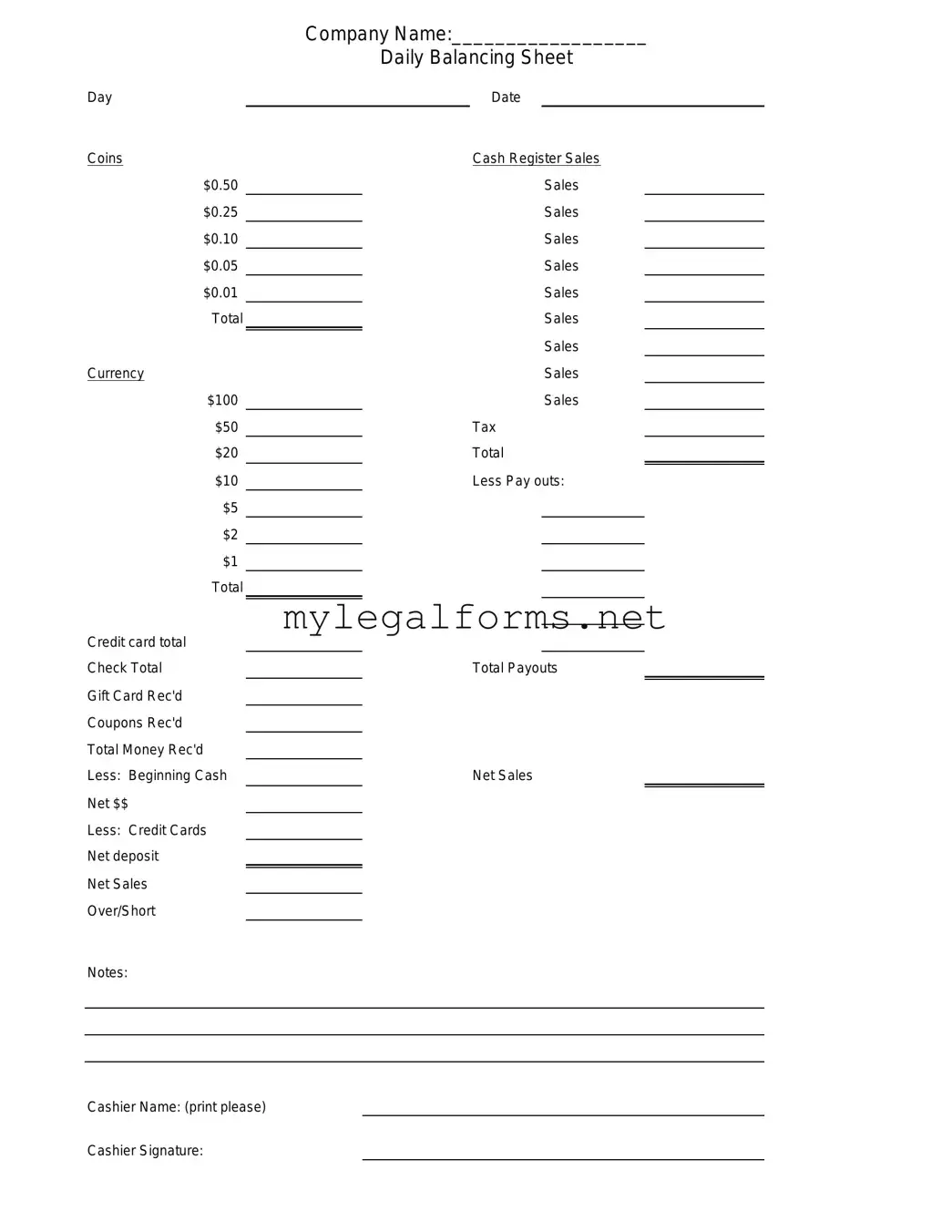When filling out the Cash Drawer Count Sheet, accuracy is essential for maintaining financial integrity. However, many individuals make common mistakes that can lead to discrepancies. One frequent error is failing to record the starting cash balance. Without this crucial figure, it becomes challenging to determine how much cash was added or removed throughout the day.
Another mistake often encountered is not counting the cash thoroughly. It’s easy to overlook a few bills or coins, especially in a busy environment. A thorough count ensures that the totals match up with the transactions recorded. Additionally, people sometimes forget to include all forms of cash, such as checks or credit card receipts that may have been converted to cash during the day.
Inaccurate calculations can also pose a significant problem. When adding up the cash totals, simple arithmetic errors can lead to larger discrepancies. It’s advisable to double-check all calculations to ensure accuracy. Furthermore, using incorrect denominations can cause confusion. For instance, mixing up $10 bills with $20 bills can lead to significant errors in the final count.
Another common oversight is neglecting to sign and date the Cash Drawer Count Sheet. This step is vital as it provides accountability and a clear record of who completed the count. Without a signature, it may be difficult to trace back any discrepancies that arise later.
Moreover, failing to follow the established procedures for filling out the form can lead to inconsistencies. Each organization may have specific guidelines that should be adhered to. Ignoring these procedures can result in missing information or misinterpretations of the data.
People also sometimes forget to document discrepancies when they occur. If the cash count does not match the expected amount, it is crucial to note this on the form. Failing to do so can complicate future audits and investigations.
Finally, not keeping a copy of the completed Cash Drawer Count Sheet can lead to issues down the line. Retaining a copy ensures that there is a record available for future reference, which can be invaluable if questions arise about the cash flow.
By being aware of these common mistakes, individuals can improve their accuracy when filling out the Cash Drawer Count Sheet. Taking the time to double-check counts, follow procedures, and document everything thoroughly will help maintain financial integrity.

